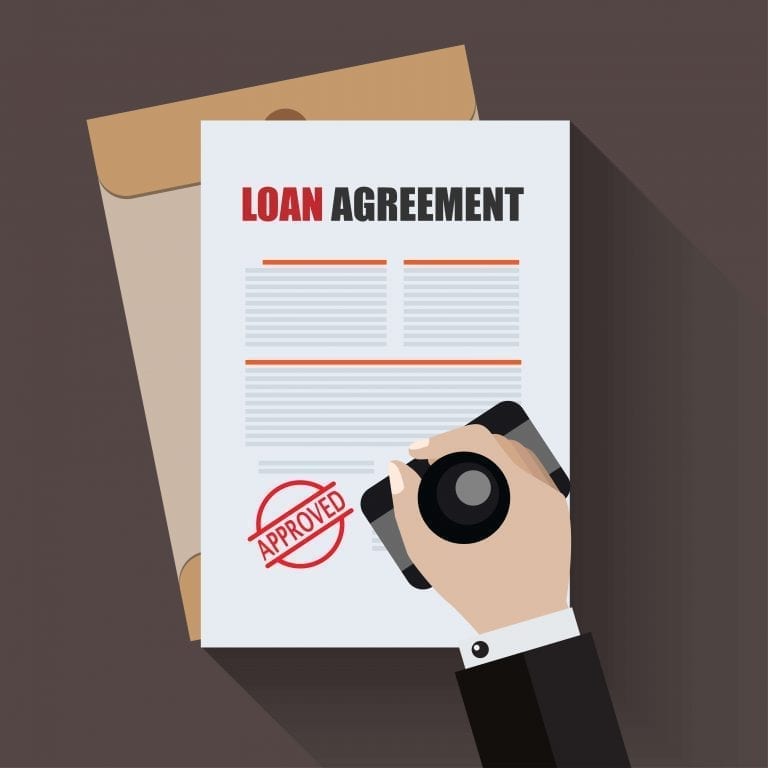How Payday Loans Work and Lower Cost Alternatives
You’re a hard-working single mom, and your refrigerator breaks.
You don’t have the money to fix it and the Tooth Fairy didn’t leave $1,000 under the pillow for one of those gleaming new 2-door uprights at the box store. Deadbeat dad is nowhere in sight.
But you need $400 to fix the damn refrigerator. Your kids have to eat. What do you do?
What millions of Americans do is go looking for a small-dollar loan from a lender who isn’t a loan shark. The easiest source of fast money is payday loans, but that’s a predatory business that critics say is only a step or two above loan sharks.
Payday loans typically run from $100 to $1,000 with the average loan going for $375. The only real requirement is that you have a job and a checking account. An estimated 12 million people use the service and we’d like to tell you the total amount payday lenders handed out in 2017, but we can’t accurately do that. More on that in a moment.
The point is that a lot of people rely on payday loans to solve financial emergencies like work out refrigerators. Walk down a major street in most any city, especially areas near low-income housing, and you’ll find a payday loan shop. There are 16,000 of them in the U.S., and a kazillion more online.
Fast money has joined fast food as easily identified landmarks on the American landscape.
“Here in Alabama,” President Barrack Obama said in a speech in Birmingham in 2015, “there are four times as many payday lending stores as there are McDonald’s. Think about that, because there are a lot of McDonald’s.”
Borrowers Struggle to Repay Payday Loans
They call them payday loans because you’re supposed to pay them back with your next paycheck. Many people do, and it works out swell for them.
But most can’t pay their payday loan back. Instead, they take out second payday loan to pay off the first one, then a third … and fourth … and so on. That’s the reason we can’t give you an accurate accounting of how much money payday loan stores lend.
If someone borrows $500, but can’t pay it back and borrows a second and third time, did they borrow $1,000 and then $1,500? No, they still only borrowed $500, but they’re paying more in fees each time they borrow.
Pew Charitable Trusts senior research officer Alex Horowitz, who has done considerable study on this matter, said the only meaningful numbers are these:
- Payday loan borrower take out a median number of eight loans every five months.
- They spend roughly $9 billion in fees and interest to pay off those loans.
- That means the average payday loan borrower spends $750 in fees for a $375 loan.
As President Obama said, “You don’t need to be a math genius to know that it’s a pretty bad deal.”
How to Find the Payday Loan, If it’s Your Only Option
Getting a payday loan isn’t always easy. Fifteen states have banned them as predatory under criminal usury laws, especially in the northeast, or regulate them heavily.
Prominent academics and media people line up to hate payday loans nowadays. It’s as automatic as saying they like children, pets, and organic low-fat ice cream.
It got so bad Freakonomics did a radio show, “Are Payday Loans Really as Evil as People Say?”
Yes. And no. Like a beautiful pit bull dog, it depends on how you handle it.
President Obama’s Alabama speech in 2015 decried the loans that look like “easy money” but trap the unwary in a vicious “cycle of debt.”
“You take out a $500 loan at the rates that they’re charging at these payday loans — some cases 450% interest — you wind up paying more than $1,000 in interest and fees on the $500 that you borrowed,” he said.
He’s right. The rollovers are the killers.
“If you’re trapping hard-working Americans into a vicious cycle of debt, you’ve got to find a new business model,” Obama said. “You’ve got to find a new way of doing business.”
His administration directed the Consumer Financial Protection Bureau to devise new federal rules to regulate payday loans.
The most important reforms, designed to prevent borrowers from getting caught in the catastrophic spin cycle of interest and fees debt, require lenders to establish proof that borrowers can repay in full, and ban more than three rollovers.
The rules aren’t in effect yet, but they’re already shaking up the industry.
Payday loan shops are shifting away from the two-week loan that will be regulated by the new rule, said Eliza Platts-Mills, a Clinical Professor in the Entrepreneurship and Community Development Clinic at the University of Texas School of Law, in an interview with Debt.org.
Instead, she said, “they’re offering longer-term, installment loans that are largely unregulated and still very harmful to borrowers. The installment loans still carry very high interest rates and fees.”
The new rules may put the industry out of business.
But that would be a shame for the people it helps, said Professor Robert DeYoung, an endowed professor at the University of Kansas School of Business and co-editor of the Journal of Money, Credit and Banking, in an interview for this column.
He’s no fan of people making the “terrible business decision” of rolling over payday loans again and again. He says reforms limiting rollovers are needed.
But payday loans work well for millions of people who have no other option. Here’s how:
How Payday Loans Can Work Well for You
Sebastian McKamey, a young Chicago man employed at a supermarket for $8.45 an hour, who was ticketed by the police for smoking outside the bus station.
He didn’t see the signs. True story.
Imagine banning a trickle of cigarette smoke where buses are pumping oceans of exhaust like bad-breath T-Rexes. It’s life in the big city.
The fine was $150!
He tried to blow it off, but the city was prepared to make it even costlier and more painful.
Problem was, Sebastian couldn’t even pay his $45 phone bill. His credit was already up in smoke.
So, he went down the street and got a payday loan for $200. It was easy.
“The appeal of the payday loan is that it is easy to access since there are lots of payday loan stores and they are open long hours and it is available to borrowers even if they have poor credit,” said Professor Platts-Mills.
You just need proof of income, either from a job or from government benefits, and a bank account. You give them a post-dated check or permission to do an electronic funds transfer from your bank account.
(Note: this is your collateral. They take your money when you don’t pay back on time).
Sebastian was smart. He paid the smoking fine. He paid his phone bill. He had enough left over for a hot dog and coffee.
Then he paid off the payday loan from his next paycheck.
The young man ended up paying $50 in interest and fees for the tiny loan, which figures out to an APR of 300%.
That’s horrific interest, but this is a happy ending. It got him out of a jam. That’s how it’s supposed to work.
“If you just take out one payday loan and pay it back on time, a payday loan can be a useful bridge during hard times,” Professor Platts-Mills said.
When it works well, it works like a rental car. You can buy a new Toyota Corolla for about $20,000.
If you have to rent one at $300 a week, it’ll cost you more than $15,000 in a year.
“Borrowing money (from a payday lender) is like renting money,” Professor DeYoung said. “You get to use it two weeks and then you pay it back. So, this isn’t about interest. This is about short-term use of a product that’s been lent to you.”
Alternatives to Payday Loans
There are several alternatives to payday loans for small-dollar needs.
- Mom and Dad or some other relative or friend. By far your best source for both good rates and agreeable terms. Problem is whether they have money to loan.
- Go to your bank, credit union or employer. Banks were urged in 2018 by the Comptroller of the Currency to get back in the small-dollar loan business. Credit unions have a program – Payday Alternative Loan – specifically designed for this. Some employers still make a loan until the next payday. The problem: Only a few in each category actually do make small-dollar loans.
- Try online. There are a lot of sites in the online loan business and you might find a taker. Problem is that, in most cases, the interest rate is in the 35%-40% range or higher.
- Community Loan Centers. This is a new source, mainly located in Texas, but there are versions popping up around the country. Check for one in your area. Rates are agreeable – 18%-30% — and you usually get a year to pay the money back.
- Nonprofit Debt Consolidation. Consider consolidating debt with a nonprofit credit counseling agency who will work with you to lower your interest rates and reduce late fees.
Sources:
- NA. (2018, April 3). Compare your loan options in Pennsylvania. Retrieved from https://www.finder.com/payday-loans/pennsylvania
- NA. (2016, May 26) Payday Loan Facts and the CFPB’s Impact. Retrieved from http://www.pewtrusts.org/en/research-and-analysis/fact-sheets/2016/01/payday-loan-facts-and-the-cfpbs-impact
- Cowley, S. (2017, October 5) Payday Lending Faces Tough New Restrictions by Consumer Agency. Retrieved from https://www.nytimes.com/2017/10/05/business/payday-loans-cfpb.html
- NA. (2017, Oct. 5). CFPB Finalizes Rule To Stop Payday Debt Traps.
- Retrieved from https://www.consumerfinance.gov/about-us/newsroom/cfpb-finalizes-rule-stop-payday-debt-traps/
- Dubner, Stephen Jr. (2016, April 6). Are Payday Loans Really as Evil as People Say?
- Retrieved from http://freakonomics.com/podcast/payday-loans/








